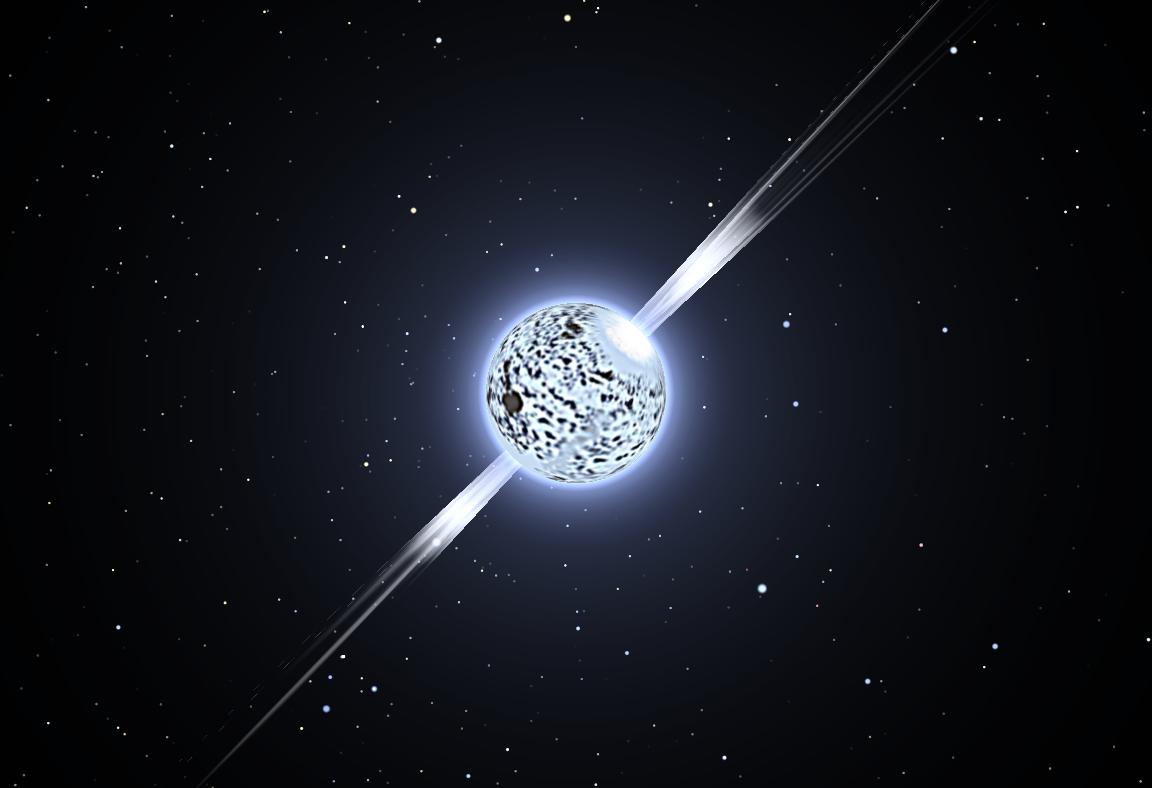Neutron stars are the most extreme objects in the universe that have been proven to exist. Black holes are very likely, but we’re still not 100% sure about them. A black hole is like a giant squid in the ocean. We’re pretty sure they exist, but nobody has caught one. The neutron star on the other hand is like a blue whale, everybody knows they exist, and they are massive, rare, and beautiful. Of course, once we know something exists, the next logical step is to figure out how it behaves, to characterize and generalize it, and to identify where it’s likely to be found. So what do we know about neutron stars?

Because a Neutron star would become a black hole if it became massive enough, there must be an upper limit to how large it can be. Similarly, if the star that produced it wasn’t massive enough, we wouldn’t end up with a neutron star in the first place. This means there is a range of possible masses for a neutron star. But how can we figure it out? We know the lower limit from studies of supernova explosions and the dynamics of massive stars. The upper limit is more interesting though. How big can a Neutron star become before it collapses into a black hole?
A Neutron star is characterized by incredible density, a huge amount of mass crammed into a relatively small space. If the Sun were compressed into a neutron star, it would be only the size of a large city. A single teaspoon of neutron star would weigh as much as a mountain. That’s how dense it is.
And if you keep adding mass to a neutron star, it can’t keep growing forever. Eventually there will come a point where it’s density increases so much that it will collapse into a black hole. For a nonrotating star, we can calculate this critical point. But there’s a catch; If the star is rotating, it’s inertia will resist the collapse, meaning you can add even more mass without it collapsing into a black hole. And the faster it rotates, the more mass you can add to it without reaching the critical point of collapse.
But there is a limit to this too, because if a star rotates quickly enough, there is nothing to prevent it from breaking apart. So there must be some absolute maximum mass for a stable rotating Neutron star that will neither collapse, nor fly apart. But this quantity is very hard to calculate, because it requires us to know the equation of state of the Neutron star. Or does it?
An equation of state is the relationship of the properties of matter for a given object. It’s usually the relationship between temperature, pressure, volume, etc. The ideal gas law PV=nRT is a simple equation of state you may remember from Chemistry. Finding the equation of state for a Neutron star, on the other hand, is very difficult, and mostly unknown.
So barring a scientific breakthrough, there’s no way to find the upper mass limit for a neutron star. Well guess what happened?
A Scientific Breakthrough!
Astronomers in Germany have found a mathematical way to describe the mass of a neutron star, without relying on the equation of state, essentially cancelling it out of the equations. “It is quite remarkable that a system as complex as a rotating neutron star can be described by such a simple relation,” declares Prof. Luciano Rezzolla, one of the authors of the publication and Chair of Theoretical Astrophysics at the Goethe University in Frankfurt. “Surprisingly, we now know that even the fastest rotation can at most increase the maximum mass of 20% at most,” remarks Rezzolla.
It’s all part of a series of recent relations discovered for Neutron stars, and it’s transforming our understanding of their properties. The next task is to identify what can be learned from the new relation, and how it can help characterize and prove new theories of how Neutron stars behave. And where one relation ends, the next begins, meaning an understanding of the upper limit of Neutron stars leads in to an understanding of the lower limit of our giant squid – Black holes.

Are these real stars because they are really cool.
Yes! Neutron stars are really out there in space. Scary to think about sometimes!
This is the best website ever
Glad you like it!
I really enjoyed your article
Thank you!
I think some or all of you astrophysicists must have black holes for brains, I can hardly follow text and diagrams you people are absolutely geniuses, I am absolutely in awe of these sites that explain theoretical and proven equations as well as pics that let us laymen understand ( basically) what lies beyond our reach physically. Thanks
Dan
Thanks Daniel! We Astrophysicists are all human and feel quite dumb on occasion. As with any type of expert, we keep working and keep learning new things. I personally am driven to find new ways to explain difficult concepts to the public, as I want everyone to see the beauty of the universe and experience it as I do.
Professor Ryan
You article was informative and captivating. Even though it is useful to know that spin can add 20% to the overall mass, you failed to answer the question.
What is the theoretical upper limit for the mass of a neutron star?
I suspect it is ~2.8 S U. (Double the chandrasekhar limit)
Thoughts?
Thanks for the comment. I think I can help you. Take a look at the Tolman–Oppenheimer–Volkoff limit. It describes the stability of a cold non-rotating neutron star. It’s analogous to the Chandrasekhar limit, which describes white dwarf stars, as you know.